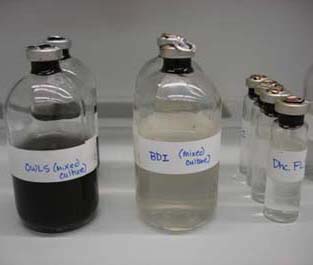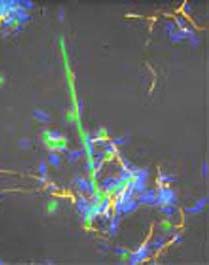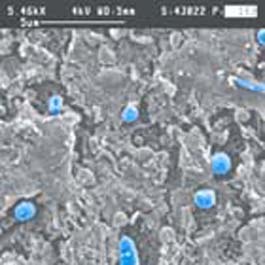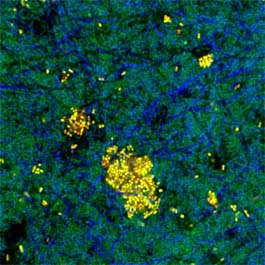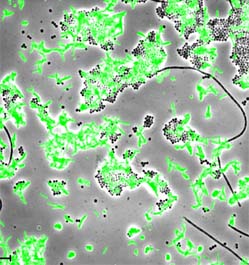| Dear visitor, here we plan to post our newly developed protocols for microscopy of samples for bioremediation research of reductive dechlorination and heavy metal /radionuclide reduction (in collaboration with the Löffler lab UTK TN USA, Sanford lab University of Illinois MI USA, Chee-Sanford lab USDA Illinois MI USA; S. Spring SMZ Braunschweig; Freedman lab Clemson University SC USA, and others).
If you are looking for current online protocols on different types of protocols for bioremediation, please check out the guidelines prepared by the Environmental Diagnostics Team at ITRC.
Most recent presentations:
- Lee, N. M., Lébron, C., Padilla-Crespo, E., Yan, J., K. M. Ritalahti and F. E. Löffler. 2012. Novel molecular biological tools to visualize bacteria involved in reductive dechlorination. Poster presentation at presentation at 8th International conference remediation of chlorinated and recalcitrant compounds
Monterey CA,USA, 21-24 May 2012.
- Lee, N. M. and F. E. Löffler. 2012. Novel molecular biological tools to visualize bacteria involved in heavy metal and radionuclide transformations. Poster presentation at presentation at 8th International conference remediation of chlorinated and recalcitrant compounds
Monterey CA,USA, 21-24 May 2012.
- Löffler, F. E., Ritalahti, K. M., Edwards. E., Lebron C., N. M. Lee. 2013. Biomarkers and tools for reductive dechlorination site assesment, monitoring and management (BioReD). SERDP project 1586. For a copy of the report, contact frank.loeffler<at> utk.edu. For additional comments on the FISH section, contact also nlee<at>microbial-systems-ecology.de.
- Click here for a full list of all former presentations on these topics.
Examples of former oral presentations (PDF version) from Batelle and REMTEC bioremediation meetings (to receive a copy, email: nlee<at>microbial-systems-ecology.de):
- Braissant, O., Spring, S.,Lebron, C., Ritalahti, K. M., F. E. Löffler and N. M. Lee. 2011. Molecular biological tools and microcalorimetry: a novel approach to estimate cellular activities. Oral presentation at REMTEC Remediation Technology Summit - The Future of Remediation Technology, Chicago IL USA, May 2011.
- N. M. Lee, Meisinger, D. B., Spring,S., Diekert, G., Richnow, H. H., Lebrón, C. A. F.E. Löffler and. 2009. Visualizing Microorganisms by Fluorescence In Situ Hybridization in Contaminated Environments – Potentials and Limits. Oral presentation at REMTEC9 Remediation Technology Summit - The Future of Remediation Technology, Atlanta GA USA, 2-5 March 2009.
- Meisinger, D. B., Padilla-Crespo, E., Ritalahti, K. M., Spring, S., Schmidt, H., Schmid, M., Lebrón, C., F. E. Löffler, and N. M. Lee. 2010. Screening of known and novel reductively dechlorinating species within Chloroflexi. Oral presentation at 7th International conference remediation of chlorinated and recalcitrant compounds, Monterey Bay CA USA, 24-27 May 2010.
Draft of upcoming contents:
- Preparation of samples for different kinds of microscopial observations.
- Search and design molecular probes for FISH (fluorescence in situ hybridization) for bioremediation applications. For search of general types of FISH probes, go to the online database Probebase.
- Different kinds of FISH protocols adapted for bioremediation (examples of general protocols can be found on our local website download lab issues/FISH, or on the Silva web site for fish protocols).
- Considerations for comparing FISH with other analytical tools.
- Software for evaluation of microscope images.
- Database of different case studies in contaminated systems.
- Advice for trouble-shooting.
- Recommended references.
- Consulting and education (join our FISH course in Munich, or lease it to your own lab. We will help you to set up appropriate facilities for FISH experiments in your lab).
|

